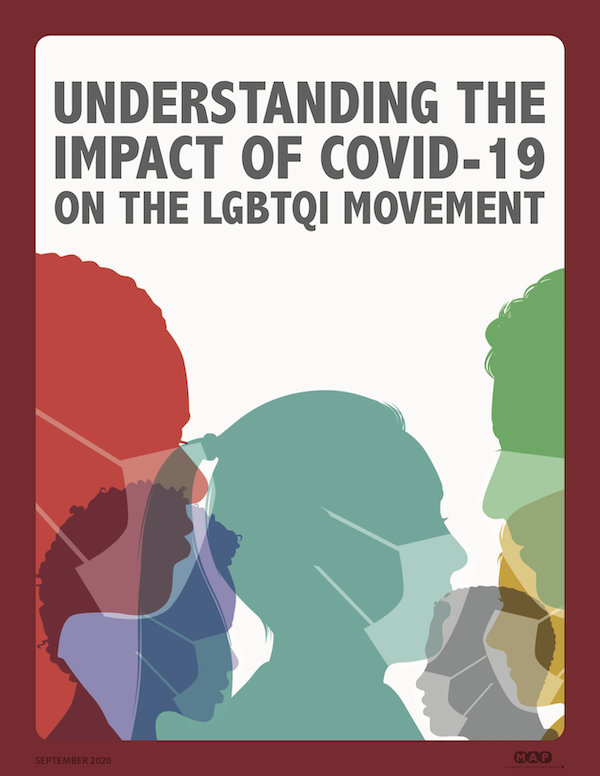Understanding the Impact of COVID-19 on the LGBTQI Movement (PDF)Download Blog — Understanding the Impact of COVID-19 on the LGBTQI MovementVISIT
To understand the ways in which LGBTQI and allied social justice organizations are responding to the COVID-19 pandemic, MAP conducted several surveys in 2020.
Understanding the Impact of COVID-19 on the LGBTQI Movement provides an overview of participating organizations’ financial health and short- and long-term planning, staffing, and efforts to ensure program stability in the face of the pandemic.
MAP’s survey results show that LGBTQI organizations are taking a measured approach, making decisions quarter-by-quarter as the situation evolves. The groups are innovative, creative, and resilient as they continue the important work of advancing LGBTQI equality and supporting the communities they serve.
While organizations are demonstrating the ability to adapt to the current moment and the financial challenges that COVID-19 has meant for fundraising, corporate and foundation giving, and beyond, it is vital that funders and individual donors think strategically and act thoughtfully to ensure the strength and continuity of the movement.
Recommended citation: Movement Advancement Project. September 2020.
Understanding the Impact of COVID-19 on the LGBTQI Movement.
www.lgbtmap.org/2020-covid-impact-report. Accessed [date of access].


